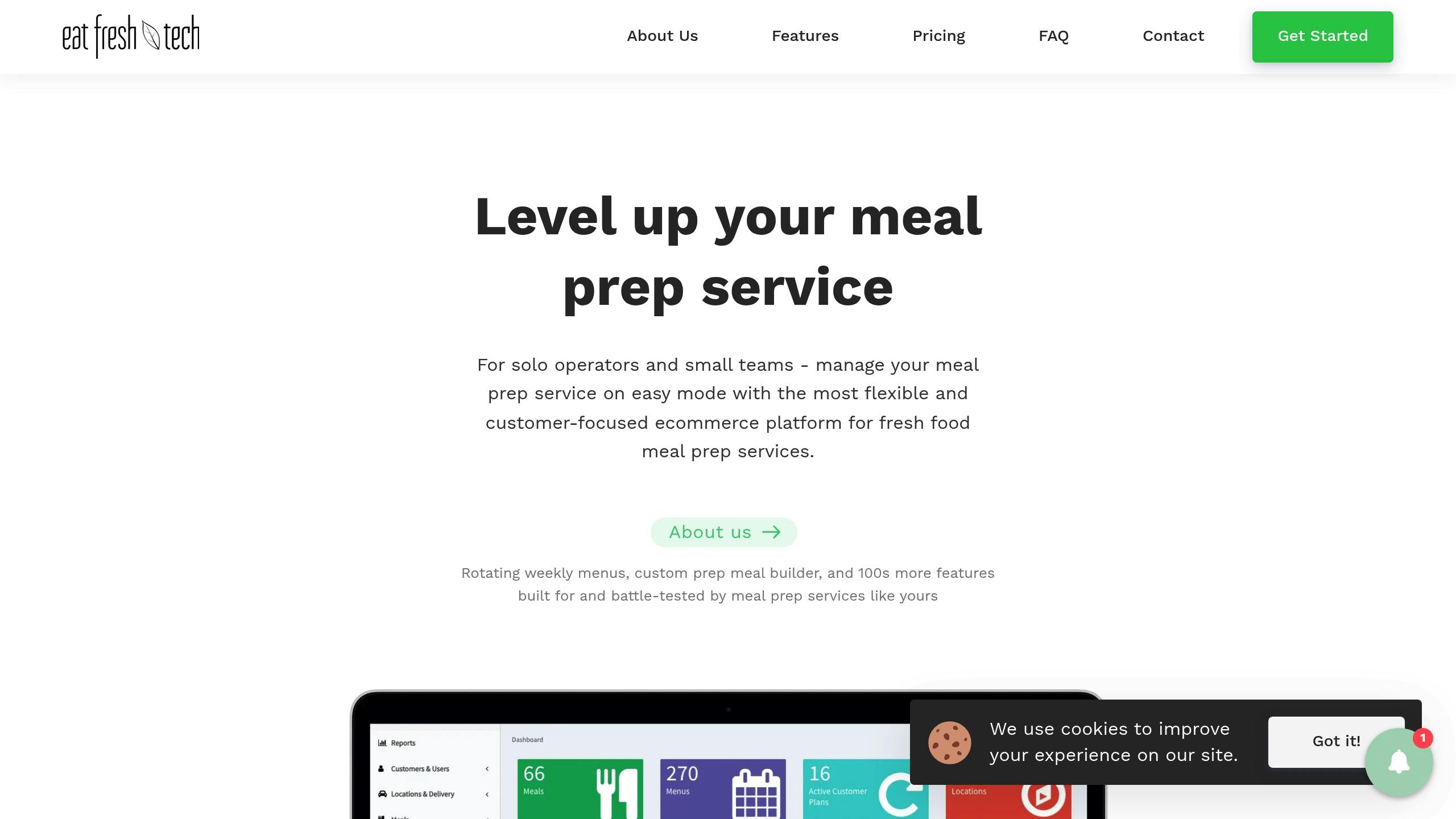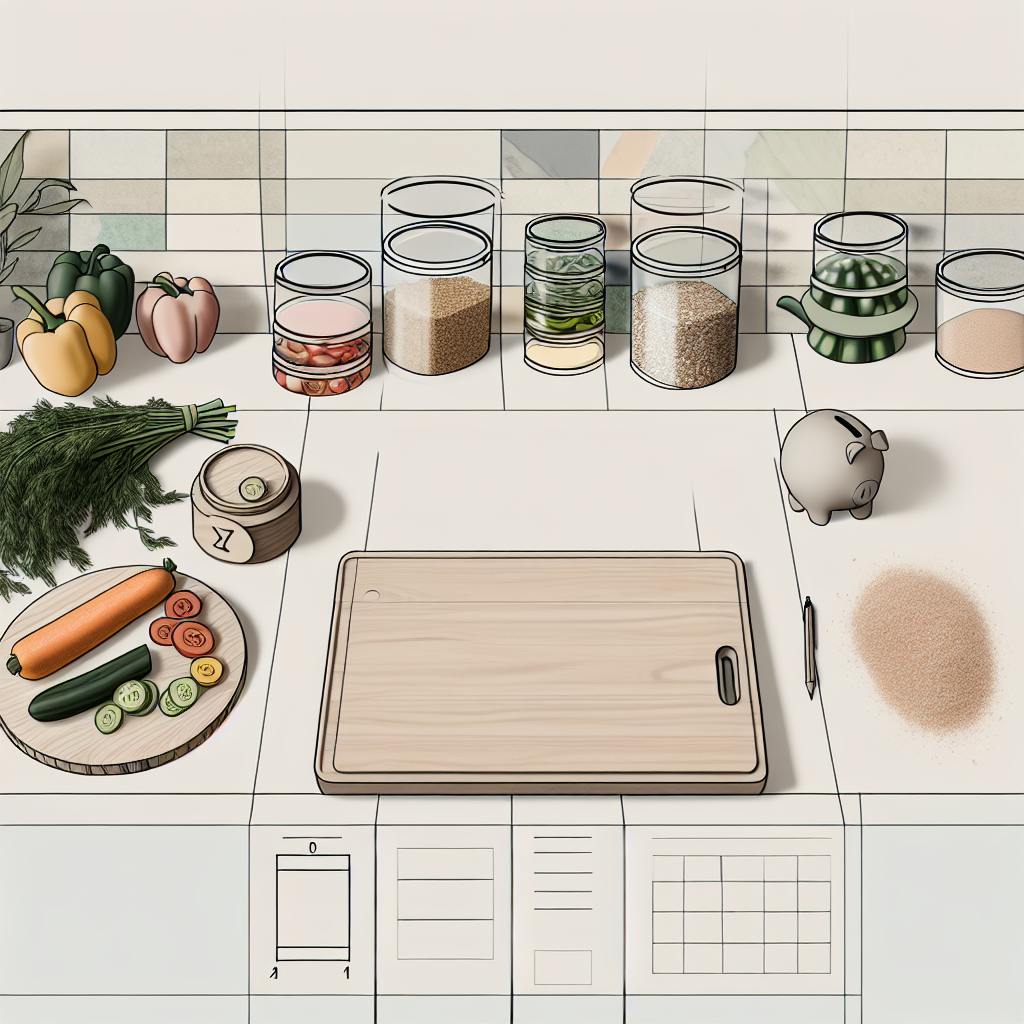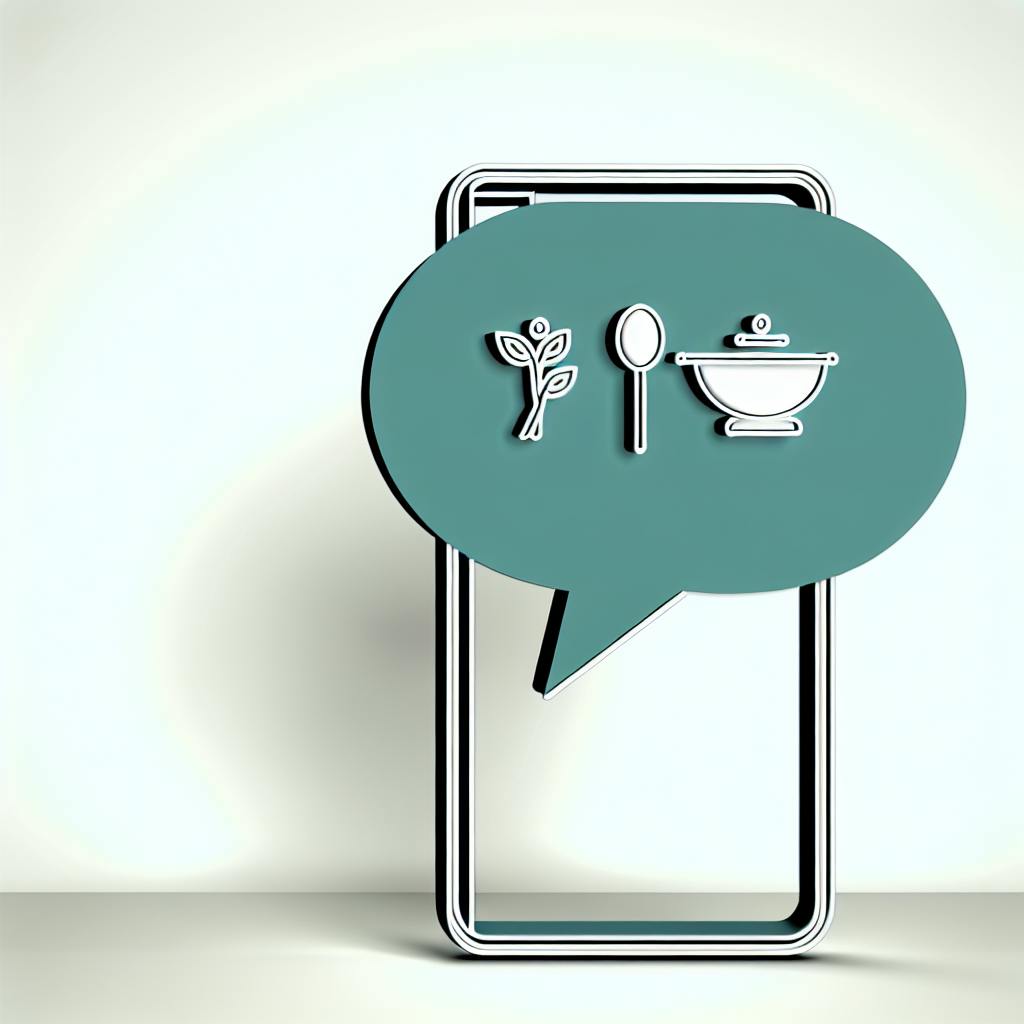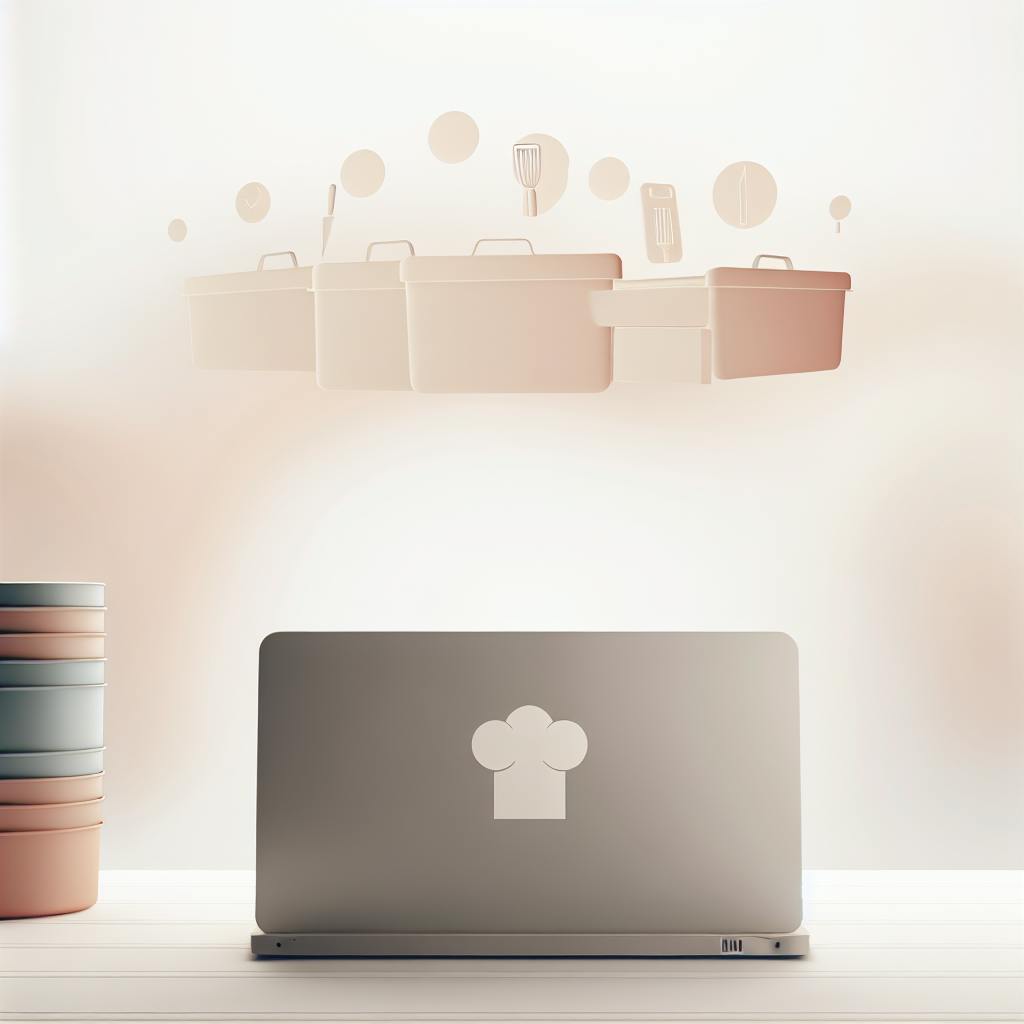- Faster Load Times: Properly scaled images load in under 2 seconds, reducing bounce rates by up to 32%.
- Improved User Experience: Clear, crisp visuals attract users and keep them engaged.
- Better Sales: High-quality images can boost conversions - Etsy saw a 25.1% increase with optimized visuals.
5 Simple Steps to Optimize Mobile Menu Images:
- Choose the Right Image Types: Use JPEG for food photos and PNG for logos. Most platforms handle this automatically.
- Compress Your Images: Use free tools like TinyPNG to reduce file sizes without losing quality.
- Select a Mobile-Friendly Platform: Choose website builders that automatically resize images for different devices.
- Enable Smart Loading: Use platforms that load images as customers scroll, improving page speed.
- Test on Real Devices: Check how your menu looks and loads on actual smartphones and tablets.
Quick Comparison Table:
| Metric | Target Value | Why It Matters |
|---|---|---|
| Image Size | Under 200KB | Faster load times, lower bounce rates |
| Load Time | Under 2 seconds | Keeps users on your site |
| Aspect Ratios | 16:9 or 19.5:9 | Fits 92% of modern devices |
| Touch Target Size | 44x44px (iOS)/48x48px | Ensures usability on mobile screens |
| Core Web Vitals (LCP) | Under 2.5s | Improves user experience and SEO |
Optimizing images properly improves your website's speed, enhances customer experience, and drives better results for mobile menus.
Image Optimization Basics for Mobile Menus
Three key factors determine how well your menu images perform on mobile: different screen sizes, loading speed, and ease of navigation for customers.
Screen Sizes and Aspect Ratios
Focus on 16:9 and 19.5:9 aspect ratios since they cover 92% of modern devices. For clear food details, use a 640px width as your starting point. These ratios directly affect how meal images are displayed, making them crucial for showcasing appetizing dishes.
Image Quality vs. Load Time
Striking the right balance between image quality and load time is critical, especially for meal prep services. Customers need to see enticing food images without delays that might cause them to abandon their carts.
Here are practical ways to optimize your menu images:
- Smart Format Selection
Use JPEG for food photos because it handles the rich colors and textures in food beautifully. Use PNG for text-heavy images like promotional banners or logos. Many modern platforms automatically choose the best format for you. - Easy Compression
Keep menu images small (under 200KB) for quick loading. Free tools like TinyPNG make this simple - just drag and drop your images, and they'll be compressed automatically. This ensures your delicious food photos load quickly without losing their appeal.
Mobile Touch Requirements
Ensure images meet touch target sizes for mobile platforms (iOS: 44x44px, Android: 48x48px) while still looking appealing at smaller dimensions. Most modern website builders and menu platforms automatically handle these requirements, ensuring your images are properly sized for easy mobile navigation.
Step-by-Step Image Optimization Methods
Building on the earlier principles of smart platform selection and image compression, here's how to effectively optimize images for better performance and customer experience.
Choosing the Right Platform for Image Scaling
The easiest way to handle mobile image scaling is to choose a platform that automatically optimizes images for different screen sizes. Look for these features when selecting your menu platform:
- Automatic Resizing: The platform should create multiple image sizes automatically
- Smart Delivery: Images should be served based on the user's device and screen size
- High-Resolution Support: The system should handle Retina and high-DPI displays without extra work from you
Easy-to-Use Image Compression Tools
Compressing images is key to maintaining fast load times without sacrificing quality. Here are user-friendly tools that require no technical expertise:
| Tool | Best For | How to Use |
|---|---|---|
| TinyPNG | Quick one-time compression | Drag and drop images, download compressed versions |
| Squoosh | Comparing before/after quality | Upload image, adjust quality slider, download result |
| ShortPixel | WordPress websites | Install plugin, automatically optimizes all images |
When compressing food images, focus on preserving texture and detail. Here's what to look for:
- Quality Setting: Choose "High" or 70-80% quality to maintain food appeal
- File Size Target: Aim for images under 200KB for fast loading
- Format Choice: Use JPEG for food photos, PNG for logos and text
- Before/After Comparison: Always preview the compressed image to ensure food still looks appetizing
Progressive Image Loading
Progressive loading ensures images are only loaded when customers scroll to them, improving page speed. Most modern website platforms and menu builders include this feature automatically. When choosing a platform, look for:
- Built-in Lazy Loading: Images load as customers scroll
- Progressive Enhancement: Low-quality images appear first, then improve
- Performance Monitoring: Tools to track how fast your menu loads
Shopify reported that progressive loading cut image load times by 35% and boosted conversions by 2.2%. This is especially useful for dynamic menus where customers browse various meal options.
Mobile Menu Testing Guide
After optimizing your images, it's essential to test your menu to ensure it loads quickly and looks great for customers.
Cross-Device Testing Steps
Testing your menu across different devices is crucial for ensuring a great customer experience. Start by viewing your menu on your own smartphone and tablet, then ask friends and family to test it on their devices. Focus on these key scenarios:
| Test Category | Primary Focus |
|---|---|
| Visual Quality | Check resolution, scaling, and aspect ratios |
| Performance | Evaluate load times and memory usage |
| Network | Test on various connection speeds |
For real device testing, ask customers, staff, and friends to check your menu on their phones. Include both iPhone and Android users, and test on both newer and older devices to ensure everyone can access your menu easily.
Key aspects to check during testing:
- Image Clarity: Food photos should look appetizing and detailed on all devices
- Loading Stability: The menu shouldn't jump around while images load
- Consistent Experience: Your menu should work the same way on all popular mobile browsers
Monitoring Your Menu Performance
To ensure your mobile menu performs well, focus on these key performance indicators that directly impact customer experience:
| Metric | Target | Purpose |
|---|---|---|
| Largest Contentful Paint (LCP) | Under 2.5s | Ensures visual content loads quickly |
| First Contentful Paint (FCP) | Under 1.8s | Provides initial feedback to users |
| Cumulative Layout Shift (CLS) | Under 0.1 | Prevents unexpected layout changes |
Free tools like Google PageSpeed Insights can help you check these metrics. Simply enter your website URL to get a performance report. Track these key indicators:
- First Impression Speed: Your menu should start showing content within 1 second
- Total Menu Size: Keep your entire menu page under 1MB for fast loading
- Individual Image Sizes: Each food photo should be under 200KB
- Mobile Network Performance: Test on 4G connections to ensure 1-second image loading
For real-world testing, use your actual mobile devices on cellular connections during busy times of day. This approach ensures your menu performs well when customers are most likely to order.
Eat Fresh Tech Mobile Image Features

For meal prep businesses seeking automated solutions, Eat Fresh Tech's platform offers tools to streamline image handling and improve user experience on mobile devices.
Mobile Menu Builder Tools
The menu builder simplifies mobile image handling with features like:
| Feature | Purpose |
|---|---|
| Responsive Sizing | Automatically adjusts image dimensions for clear display on any device |
| Image Compression | Smart compression that keeps food details sharp while improving load times |
By analyzing details such as texture and color gradients in food photos, the system ensures dishes look appealing while maintaining fast performance.
Automatic Image Updates
The platform's centralized management system allows for:
- One-Click Updates: Change an image once and it updates everywhere automatically
- Easy Reversions: Quickly undo image changes if needed
- Smart Image Delivery: Automatically serves the best image quality for each customer's device
These automated tools ensure consistent performance and visual quality across meal ordering platforms, complementing earlier testing protocols.
Mobile Menu Image Optimization: Key Checklist
Here's a quick checklist to finalize your mobile image optimization:
| Optimization Area | Action Steps | Target Metrics |
|---|---|---|
| Image Optimization | Compress images using tools like TinyPNG | Aim for fast loading (under 2 seconds) on mobile |
| User Experience | Ensure images are easy to tap and view | Menu items should be clearly visible and accessible |
| Testing | Test on real devices with your target customers | Confirm menu works on all popular phone models |
When setting up your menu, ensure your most popular items appear first and load immediately. If you're using a platform with automatic optimization, review the responsive sizing and compression features to make sure they meet your needs.
Eat Fresh Tech's automated tools help busy business owners maintain professional-looking menus without technical expertise, ensuring your meal prep offerings always look appetizing and load quickly on mobile devices.


